WWII lessons: Why we should not make dictatorship great again
Gordon Darroch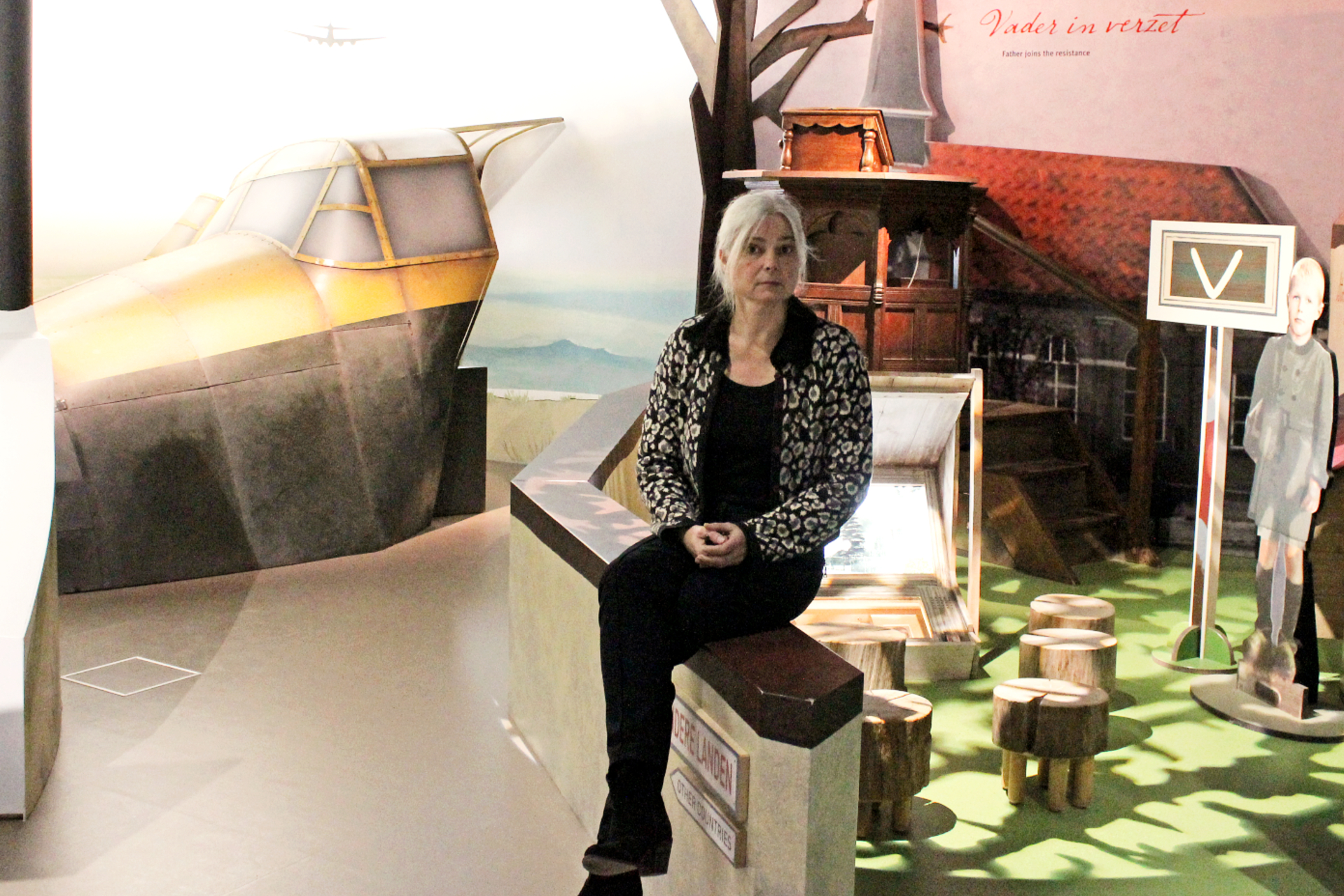
“Nobody could have suspected that it would end in extermination camps.” Those were the words of Jo Spier, a 24-year-old typographer from Amsterdam, who like most of his fellow Jews complied with an order to declare their identity to the occupying Nazi government in February 1941.
Some did so with pride: Milo Anstadt, whose family emigrated from Poland before the war, tried to warn his father of the possible consequences, but said “our loyalty to our heritage was the decisive factor”.
Others were encouraged by the Jewish Council (Joodse Raad), the subject of a recent television drama, which hoped that by maintaining dialogue with the Germans, Dutch Jews could avoid the repressive measures imposed in other occupied countries. Only when the mass deportations began in 1942 was it clear that many had unwittingly signed their own death warrants.
Spier and Anstadt’s stories are among the hundreds included in the displays of the Resistance Museum (Verzetsmuseum) in Amsterdam, which tells the complicated story of how the Dutch endured the increasingly brutal Nazi occupation.
It is well-known that three-quarters of Dutch Jews were murdered in the Holocaust, one of the highest proportions of any occupied country; less well known is that more than 6,000 Dutch nationals have since been honoured by Yad Vashem, the world Holocaust remembrance centre in Israel, for rescuing Jews from the Nazis’ clutches. Only Poland, with a wartime population that was four times greater, can claim more.
“In the early years after the war there was a lot of focus on the resistance, because it was a way of salvaging Dutch pride,” says the museum’s director, Liesbeth van der Horst. “The persecution of the Jews got a lot less attention, because it was too painful and horrific.
“As time went by the balance shifted and the resistance came to be seen in a negative light: too little, too late, too much collaboration. But the Netherlands had a very strict regime, much harder than countries like Belgium and France, headed by fanatical Nazis like [Arthur] Seyss-Inquart and [Hanns Albin] Rauter.”
The recurring message of the Resistance Museum is that life in wartime is never a straightforward story of heroes and villains. “Resistance is not an easy choice,” says Liesbeth van der Horst, the director of the museum for the last 20 years.
“It’s understandable that a lot of people didn’t take part. We have the story of the daughter of a resistance fighter who says: yes, my father was in the resistance, but our family paid the price. We include those elements because we want to give a nuanced picture.”
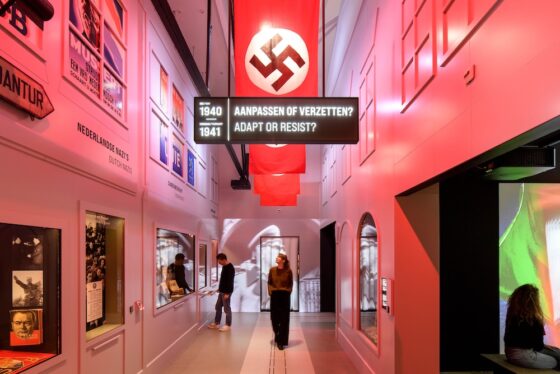
The Resistance Museum was founded in 1985, during a period when the commemoration of the war had become a subject of fierce political debate.
Jewish community groups and former resistance members protested against the government’s plans to release the “Breda Three”, the last German war criminals in Dutch custody in 1972, but others were concerned that the wartime past was becoming mythologised. The last two prisoners were eventually released in 1989 and died shortly afterwards.
Van der Horst joined the museum as a volunteer in the same year, when it was a shoestring operation in Lekstraat, and took over as curator in 2003, four years after it moved to its current location in the Plantage neighbourhood.
She was warned when she took the helm that interest in the war would decline as the generation who experienced it at first hand died off, but the opposite has proved to be the case. “In Lekstraat we had 15,000 visitors a year; last year we had 120,000,” she says.
“People became more frightened, because they saw what repression meant”
The museum’s content has evolved to reflect the way people’s understanding of the war has changed in the last 80 years. In the beginning many of the volunteer staff had served in the resistance themselves. “They were newly retired, so they started all kinds of initiatives to go round talking to schools and setting up museums,” Van der Horst says. “They became incredibly involved in the whole culture of remembrance.”
As the wartime generation has grown older, the museum has had to rely more on documentation and visual aids. “When I came here all we had was two typewriters and a photocopier,” Van der Horst says. Today the museum’s displays are more polished and interactive, “because we have to compete with the theme parks. We keep the texts as short as possible and use personal stories, because we’ve found that that’s what our visitors really appreciate.”
The story of the war is broken down into six chapters, to show how the relationship between occupiers and occupied changed as the war went on. In the early days the Germans tried to cultivate a sense of brotherhood with the Dutch. The economy flourished and unemployment fell as Germany placed orders with factories in the Netherlands.
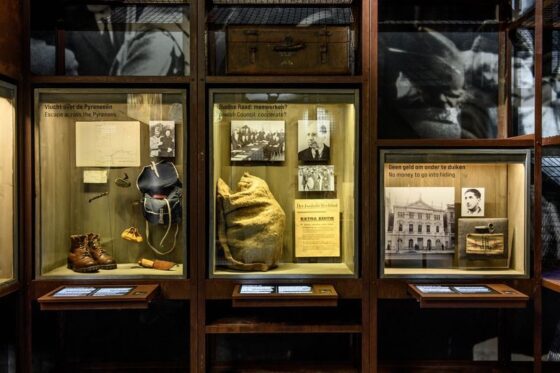
“Even the first anti-Jewish measures were very cautious and limited, and mainly focused on registration,” Van der Horst says. “There wasn’t very much to resist against. Resistance was mostly symbolic. People showed they were anti-German through things like supporting the royal family, but almost everyone went along with the registration rules that made it much easier to persecute the Jews later on.”
But gradually the regime became more oppressive. A turning point was the February Strike of 1941, which followed the first razzia in Amsterdam. Behind the scenes the Nazis and their Dutch sympathisers, the NSB, had been harassing Jews and inciting riots to try to turn the general population against them. When a prominent Dutch Nazi was killed in a fight with Jews and others, the Nazis rounded up and deported 400 Jewish men.
“Almost everyone went along with the registration rules that made it much easier to persecute the Jews later on”
The underground Communists party responded by calling a general strike that the Nazis put down with brutal violence in which nine people died. “It was the first time the Germans had shown their true face,” Van der Horst says. “But at the same time people became more frightened, because they saw what repression meant.”
The early resistance was hampered by the fact that its leaders had little in common. “It was often people with deep-seated beliefs, either because they had a strong Christian motivation or they were committed communists. The two groups didn’t trust each other, but as the war went on they came to work together, and for the most part they worked together well.”
Later sections show how the resistance grew and became better organised as the Nazis became more ruthless. Some 28,000 Jews went into hiding, but so too did thousands of Dutch men to avoid being deported to work in German arms factories or on the land.
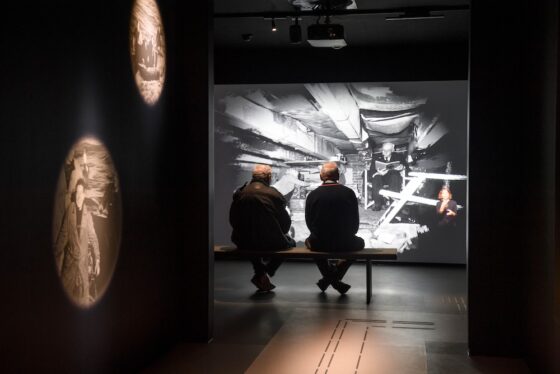
Jo Spier, the young Amsterdam typographer who had signed the Jewish register in 1941, had to flee across rooftops when German officials came to his house in 1943 and went into hiding in Rotterdam.
After playing cat and mouse with the Germans for a year he was taken to Westerbork transit camp in Drenthe, where he escaped with the help of a Dutch resistance group led by Joop Westerweel, a schoolteacher in Bilthoven. Westerweel was shot by the Nazis in 1944, while Spier made it to Limburg and lived to the age of 93.
It worries Van der Horst to see how the concept of resistance has been subverted in the last few decades by populist politicians.
“What we want to show is how badly things can fall apart under a dictatorship”
Geert Wilders, leader of the far-right PVV, has called on his supporters in the past to “resist” asylum seekers’ centres in their municipality; protesters against the coronavirus pandemic controls took to wearing yellow stars during public demonstrations, as if being told to wear masks in shops was somehow comparable to the persecution of the Jews.
“Some people were angry that we were checking vaccination passes at the door,” she says. “They thought we should be resisting it. But that’s not the kind of resistance that we stand for.”
As she prepares to hand over the directorship to Karlien Merz on July 1, Van der Horst believes the museum will continue to have a role to play in society for decades to come. “And perhaps we need to become a bit more activist,” she says. “We’ve always held back from that, because our expertise is in storytelling, but we give those stories a platform.
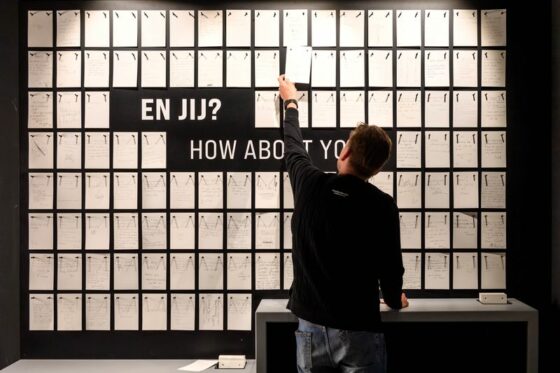
Since 2005 the museum has had a section on the Japanese occupation of the Dutch East Indies, now Indonesia, which has more recently expanded to include the post-war fight for independence from the Netherlands.
“I expected criticism when we did it, but it wasn’t as bad as I thought because people recognised their own stories,” Van der Horst says. “It showed that if you make sure all groups can find their own story, they’re not so bothered by the fact that the other side also gets attention.”
That inclusivity has been at the core of the museum’s mission since Van der Horst took charge in 2003. The other key message is the value of democracy. Resistance is a last resort when the normal rules of society have broken down.
“It’s a choice people should never have to make,” she says. “What we want to show is how badly things can fall apart under a dictatorship. The arbitrariness, the way people can be sent to a concentration camp for the most innocent thing or shot because of a stroke of bad luck.
“This museum was established in the 1980s, when the first far-right political parties started to appear in the Netherlands. And it’s very relevant again today, when you see what’s happening in America and Russia. The society we live in isn’t perfect, but we should cherish it, because dictatorship isn’t a good alternative.”
Thank you for donating to DutchNews.nl.
We could not provide the Dutch News service, and keep it free of charge, without the generous support of our readers. Your donations allow us to report on issues you tell us matter, and provide you with a summary of the most important Dutch news each day.
Make a donation